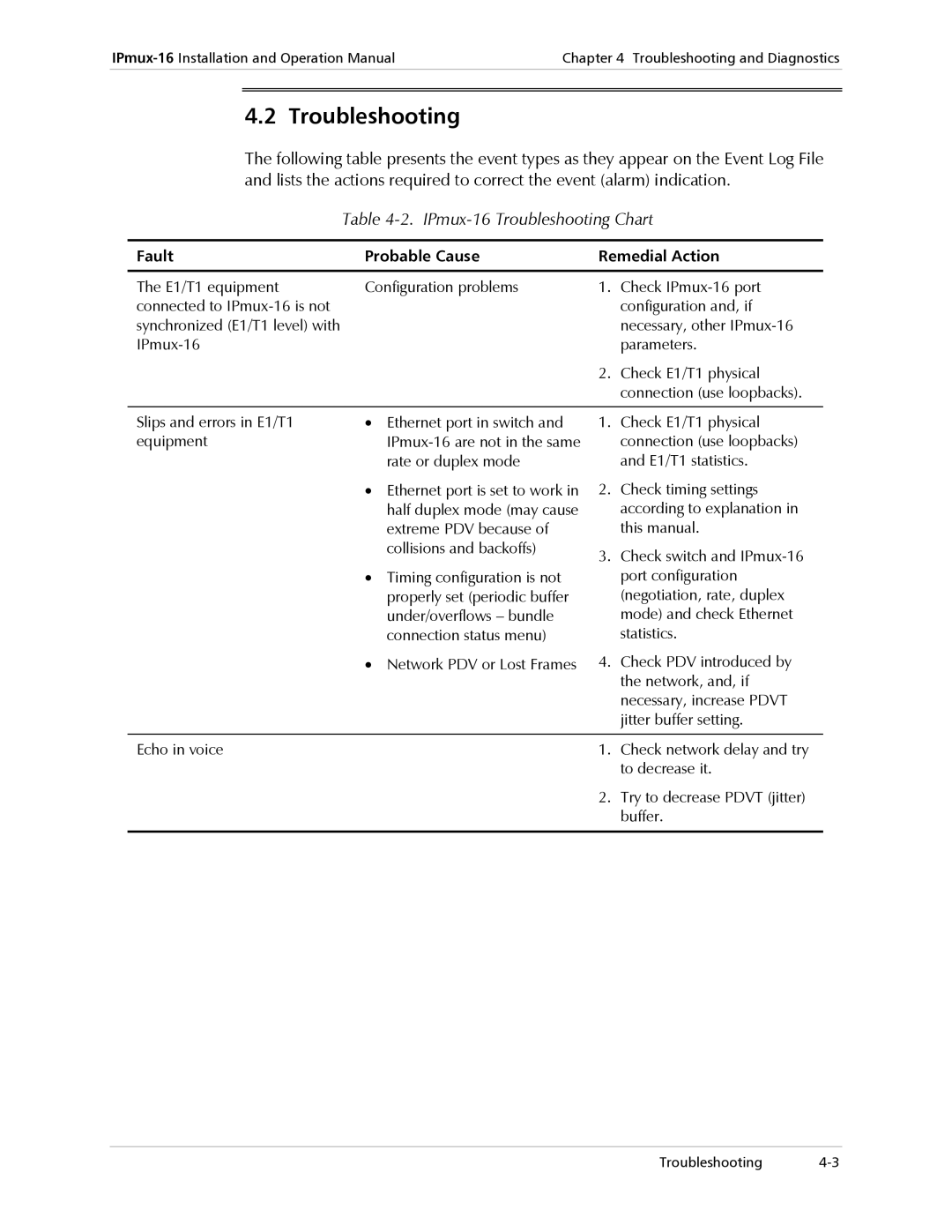
Chapter 4 Troubleshooting and Diagnostics | ||
|
|
|
|
|
|
|
|
|
4.2 Troubleshooting
The following table presents the event types as they appear on the Event Log File and lists the actions required to correct the event (alarm) indication.
Table 4-2. IPmux-16 Troubleshooting Chart
Fault | Probable Cause | Remedial Action | |
|
|
|
|
The E1/T1 equipment | Configuration problems | 1. | Check |
connected to |
|
| configuration and, if |
synchronized (E1/T1 level) with |
|
| necessary, other |
|
| parameters. | |
|
| 2. | Check E1/T1 physical |
|
|
| connection (use loopbacks). |
|
|
|
|
Slips and errors in E1/T1 | • Ethernet port in switch and | 1. | Check E1/T1 physical |
equipment |
| connection (use loopbacks) | |
| rate or duplex mode |
| and E1/T1 statistics. |
| • Ethernet port is set to work in | 2. | Check timing settings |
| half duplex mode (may cause |
| according to explanation in |
| extreme PDV because of |
| this manual. |
| collisions and backoffs) | 3. | Check switch and |
|
| ||
| • Timing configuration is not |
| port configuration |
| properly set (periodic buffer |
| (negotiation, rate, duplex |
| under/overflows – bundle |
| mode) and check Ethernet |
| connection status menu) |
| statistics. |
| • Network PDV or Lost Frames | 4. | Check PDV introduced by |
|
|
| the network, and, if |
|
|
| necessary, increase PDVT |
|
|
| jitter buffer setting. |
|
|
|
|
Echo in voice |
| 1. | Check network delay and try |
|
|
| to decrease it. |
|
| 2. | Try to decrease PDVT (jitter) |
|
|
| buffer. |
|
|
|
|
Troubleshooting
